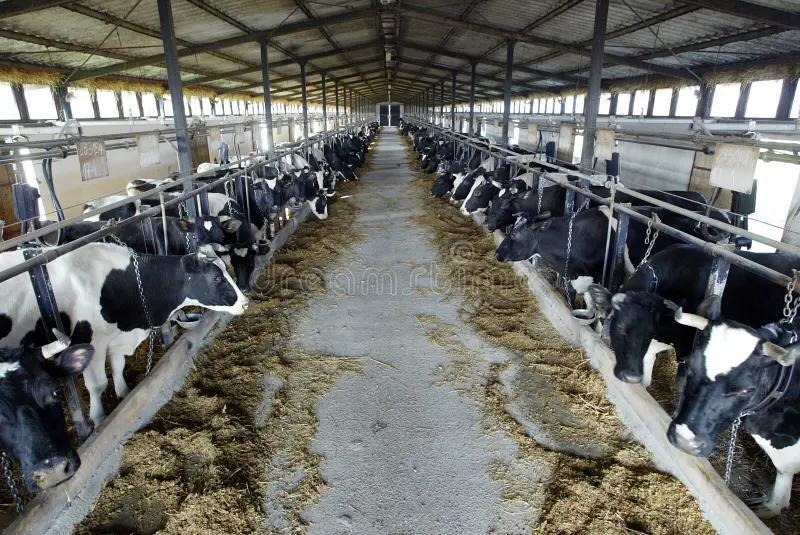The journey of dairy products from the farm to the consumer’s table is a complex process that involves numerous stages, each crucial to ensuring the quality, safety, and sustainability of the final product. In “From Cow to Carton: The Journey of Dairy Products and Sustainable Practices,” we explore this intricate supply chain and highlight the sustainable practices being implemented to improve efficiency and reduce environmental impact.
### The Dairy Production Process
1. **Raising the Cows**: The journey begins with the dairy cows themselves. The health and well-being of dairy cattle are fundamental to producing high-quality milk. Farmers focus on providing nutritious feed, clean water, and comfortable living conditions. Modern dairy farms use advanced breeding techniques, such as genetic selection, to improve herd productivity and health.
2. **Milking and Processing**: Once the cows are ready, they are milked using modern milking systems that ensure efficiency and hygiene. Automated milking systems (AMS) and robotic milkers have revolutionized this process, allowing for more frequent and efficient milking while collecting valuable data on milk quality and cow health.
After milking, the milk is quickly cooled and transported to processing facilities. Here, it undergoes pasteurization to eliminate harmful bacteria and ensure safety. Pasteurization involves heating the milk to a specific temperature for a set period before cooling it rapidly.
3. **Processing and Packaging**: In the processing facility, milk is transformed into various dairy products such as cheese, yogurt, butter, and ice cream. The processing stage includes homogenization, where milk fat is broken down to prevent cream separation, and the addition of flavorings or other ingredients. Quality control measures are in place throughout this stage to maintain product standards.
Once processed, dairy products are packaged in materials that preserve freshness and ensure safety. Packaging innovations, such as aseptic containers and recyclable materials, play a crucial role in maintaining product quality and minimizing environmental impact.
4. **Distribution**: Packaged dairy products are distributed to retailers through a network of logistics and supply chain operations. Efficient transportation and storage are essential to ensure that products reach consumers in optimal condition. Temperature-controlled transportation systems help maintain the cold chain, which is critical for dairy product quality.
### Sustainable Practices in Dairy Farming
As consumer awareness of environmental issues grows, the dairy industry is increasingly adopting sustainable practices to minimize its ecological footprint. Here are some key areas of focus:
1. **Waste Management**: Effective waste management is crucial in reducing the environmental impact of dairy farming. Manure management systems, such as anaerobic digesters, convert manure into biogas, which can be used as a renewable energy source. This process not only reduces greenhouse gas emissions but also provides valuable nutrients for soil fertilization.
2. **Water Conservation**: Water is a critical resource in dairy farming, used for both the animals and crop production. Sustainable water management practices include implementing water-efficient cooling systems, optimizing irrigation techniques, and recycling wastewater. These practices help conserve water resources and reduce overall consumption.
3. **Feed Efficiency**: Improving feed efficiency is another key aspect of sustainability. Researchers are developing feed additives and alternative feeds, such as algae-based supplements and insect protein, to enhance nutrient utilization and reduce methane emissions. Precision feeding systems also help optimize feed formulations based on the specific nutritional needs of dairy cattle.
4. **Energy Efficiency**: Dairy farms are exploring renewable energy sources, such as solar and wind power, to reduce reliance on fossil fuels. Energy-efficient technologies, such as LED lighting and high-efficiency equipment, contribute to lower energy consumption and reduced carbon footprints.
### Innovations for Sustainability
1. **Precision Dairy Farming**: Precision dairy farming uses technology to monitor and manage dairy operations more effectively. GPS, sensors, and data analytics help optimize feed distribution, monitor cow health, and manage pasture conditions. This data-driven approach enhances productivity and sustainability by reducing waste and improving resource utilization.
2. **Circular Economy Practices**: The concept of a circular economy emphasizes the reuse and recycling of resources to minimize waste. In dairy farming, this includes practices such as using by-products for animal feed, recycling packaging materials, and implementing closed-loop systems to reduce waste and improve resource efficiency.
3. **Sustainable Packaging**: Innovations in packaging are addressing environmental concerns by focusing on recyclable, biodegradable, and reduced-plastic materials. Sustainable packaging solutions help minimize the environmental impact of dairy products and align with consumer preferences for eco-friendly products.
4. **Animal Welfare Initiatives**: Improving animal welfare is an integral part of sustainable dairy farming. Practices such as providing comfortable housing, enriching environments, and regular health monitoring contribute to better animal health and productivity. Enhanced animal welfare also supports sustainability by ensuring the long-term viability of dairy operations.
### Conclusion
“From Cow to Carton: The Journey of Dairy Products and Sustainable Practices” highlights the intricate process of dairy production and the ongoing efforts to enhance sustainability within the industry. From the care of dairy cows to the innovations in processing and packaging, every stage of the dairy supply chain is being optimized for efficiency and environmental responsibility. By adopting sustainable practices and embracing technological advancements, the dairy industry is working towards a future that balances the needs of consumers, the environment, and the economy.

